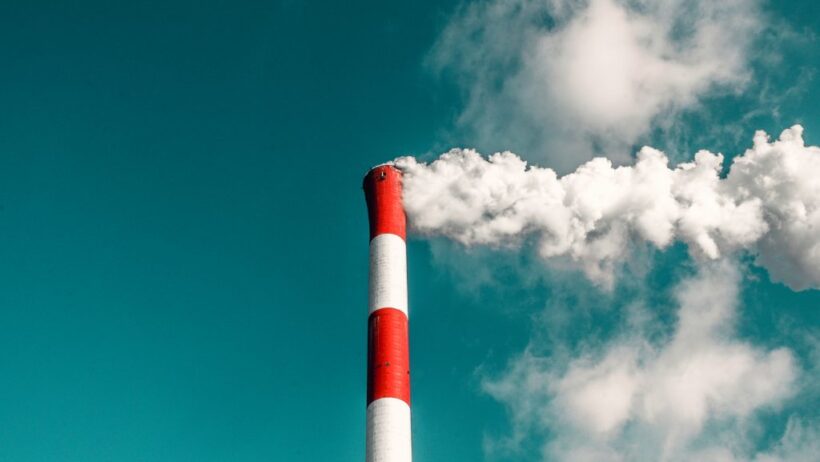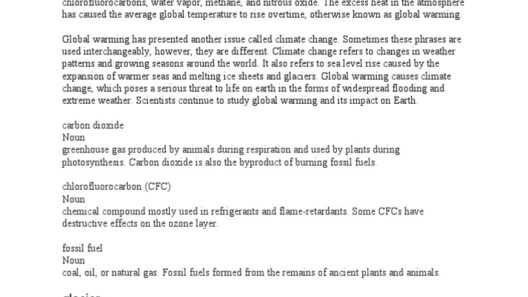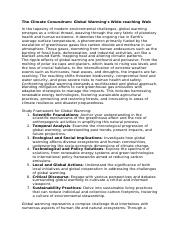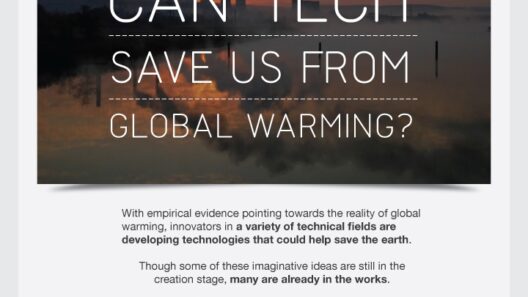As we navigate the 21st century, the specter of global warming looms larger than ever. Climate change is not merely an abstract concept; it is a tangible consequence of human activity, threatening the fabric of our planet’s ecosystems. But how often do faith-based communities engage with this grave reality? What if we posed a playful question: What would our spiritual leaders do if they were truly custodians of the Earth? The answer may illuminate a path forward, challenging communities to reassess and confront their responsibilities in the face of environmental degradation.
The environmental crisis we face today is rooted in the accumulation of greenhouse gases, primarily carbon dioxide. These gases, released through the burning of fossil fuels, deforestation, and various industrial processes, create an insulating layer in the atmosphere. As a result, heat escapes less readily into space, leading to a gradual rise in global temperatures—a phenomenon commonly referred to as global warming.
Scientific consensus underscores the urgency of this issue. According to leading climate scientists, if we do not curtail our carbon emissions, we could see temperatures rise by more than 1.5 degrees Celsius by the year 2030. This seemingly minor increase holds catastrophic implications. From severe weather events and rising sea levels to widespread habitat loss and species extinction, the ramifications of climate inaction resonate across the globe. Given the stakes involved, how can faith-based communities contribute meaningfully to this existential challenge?
Faith communities have historically been at the forefront of social justice movements. The fight against poverty, inequality, and racism has long been anchored in moral imperatives found within religious texts. This foundation provides a unique lens through which to view environmental justice. The Scriptures speak to stewardship of the Earth, urging us to care for creation as a divine mandate. For Christians, the concept of “creation care” is paramount; it frames environmental responsibility within the context of a spiritual obligation. Thus, the question emerges: How can these teachings be harnessed to galvanize action against climate change?
One potential challenge lies in translating theological concepts into actionable climate initiatives. Many individuals within faith groups may feel disconnected from environmental issues, viewing them as secular concerns or outside their sphere of influence. However, engaging congregations in climate conversations can be transformative. Churches can integrate discussions about environmental stewardship into sermons, Bible studies, and community activities. This connection between faith and environmentalism normalizes the conversation, encouraging action rooted in spiritual conviction.
Moreover, there is a vast reservoir of scriptural references that can inspire climate action. For example, Genesis 2:15 states, “The Lord God took the man and put him in the Garden of Eden to work it and take care of it.” This profound directive invites faith-based communities to view their environmental efforts as an extension of their faith practice. By implementing sustainable practices—such as reducing waste, advocating for renewable energy, and supporting local agriculture—congregations can embody the principles of stewardship and responsibility.
Additionally, interfaith dialogue can serve as a vehicle for collective action. As various faith traditions unite in the pursuit of ecological sustainability, they can pool resources, knowledge, and influence to effect change on a larger scale. This collaborative effort can elevate the discourse on climate change beyond ideological lines, emphasizing our shared humanity and the collective need for a healthy planet. Activities such as tree-planting events or community clean-up days can foster camaraderie and demonstrate that collective commitment to the environment can transcend religious differences.
Despite the persistent challenges, there are also promising trends within faith-based environmental movements. Organizations like GreenFaith and The Evangelical Environmental Network are leading efforts to mobilize faith communities towards climate action. Through campaigns, educational resources, and advocacy initiatives, these organizations are demonstrating that faith and environmental sustainability are not mutually exclusive. The narrative is shifting; growing numbers of people of faith are recognizing that caring for the Earth is synonymous with caring for one another, especially for marginalized populations disproportionately affected by climate change.
This convergence of faith and action is fortifying environmental advocacy across the globe. Picture a world where every congregation embraces “creation care” as a sacred duty. How might that agenda ripple out into local communities, influencing public policy and corporate responsibility? The potential for transformative impact is profound, yet it requires a collective commitment to act decisively.
In conclusion, a pivot towards environmental engagement within faith-based communities is not merely desirable; it is imperative. The reality of climate change demands that we transcend comfort zones and institutional inertia. By embracing the call to stewardship while challenging ourselves to enact meaningful change, faith communities have an unparalleled opportunity to lead the charge toward a sustainable future. Are we prepared to rise to this challenge? The answer lies not only in our hearts but also in the actions we cultivate from those convictions.
As stewards of the Earth, we are presented with a choice: to remain passive witnesses to impending ecological demise or to become active participants in the saga of restoration and hope. The intersections of faith and environmental responsibility beckon us to respond with resolve, courage, and unwavering commitment. The time for a climate for change is now.







